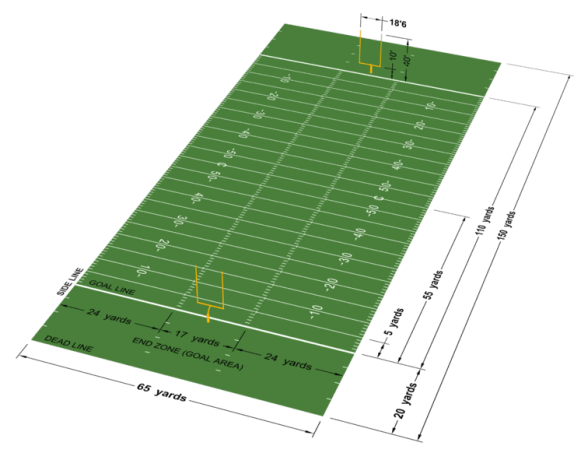Cfl Point System
How Do CFLs Work?
CFLs produce light differently than incandescent bulbs. In an incandescent, electric current runs through a wire filament and heats the filament until it starts to glow. In a CFL, an electric current is driven through a tube containing argon and a small amount of mercury vapor. This generates invisible ultraviolet light that excites a fluorescent coating (called phosphor) on the inside of the tube, which then emits visible light.

CFLs need a little more energy when they are first turned on, but once the electricity starts moving, CFLs use about 70% less energy than incandescent bulbs. A CFL’s ballast helps 'kick start' the CFL and then regulates the current once the electricity starts flowing.
/cdn.vox-cdn.com/uploads/chorus_asset/file/9681243/EndzoneFumbles_Getty_Ringer.jpg)
This entire process typically takes 30 seconds to 3 minutes to complete, which is why CFLs take longer than other lights to become fully lit. CFLs with decorative covers like globe or reflector shapes have a unique design challenge that results in the tradeoff of a slower warm up time, which is why these CFLs take longer than bare spirals to reach full brightness.
Older CFLs used large and heavy magnetic ballasts that caused a buzzing noise in some bulbs. Most CFLs today — and all ENERGY STAR certified CFLs — use electronic ballasts, which do not buzz or hum.

Purchasing Tips
- Look for the ENERGY STAR label
- Learn more about why to choose ENERGY STAR.
- Decide how much light you need
- Remember that Lumens measure brightness, not Watts
- Learn more about brightness.
- Check the package for the bulb’s recommended use
- New bulbs are specially designed for certain applications, let the package be your guide!
- Think about the mood you want from your light
- Choose a light color from warm to cool for your needs.
- Learn more about color and mood.
CFL Season has not started! Please give an overall site rating. A Homeless Management Information System (HMIS) is a locally administered, electronic data collection system that stores longitudinal person-level information about persons who access the homeless service system in a Continuum of Care.
- CFL COURSE SCHEDULE. As a precaution to the COVID-19 pandemic, Command Fitness Leader Courses will resume Sept 2020. CFL Course Schedule (22 FEB 21).pdf. For information on OPNAV's CFL Seminar Schedule visit the Physical Readiness website.
- Point of connection (new to existing) symbol legend bottom pipe connection top pipe connection valve in vertical p-trap floor cleanout/grade cleanout cleanout/plug pipe down pipe up cap change in pipe elevation arrow indicates direction of flow pitch pipe down in direction of arrow fresh air inlet wall hydrant abbreviations - plumbing ad area drain.
Check out the ENERGY STAR Light Bulb Purchasing Guide (PDF, 1.49 MB)
How Do I Get the Most from my CFLs?
Vince McMahon’s XFL is set to return in February of 2020, and while it remains to be seen if a secondary football league can survive in the United States after the collapse of the AAF, the nascent league is planning on making some major changes to the traditional football formula.
During an appearance on an NBC Sports podcast, #PFTPM, XFL Commissioner Oliver Luck detailed a few of the XFL’s new rules and scoring systems. In the new XFL, touchdowns can be worth anywhere from six to nine points, depending on which extra-point conversion the scoring team converts.
“We also have a three-tiered extra point. You can go for one point after you score, you can go for two points after you score, or you can go for three points after you score. We literally have a nine-point touchdown.
…. A one-point play would be a play from scrimmage at the 2-yard line.

A two-point play would be a play from scrimmage from the 5-yard line.
A three-point play would be a play from scrimmage from the 10-yard line.”

Luck also ran through a few of the other rules and format changes the XFL is testing, which includes a major overhaul to overtime.
XFL overtime is a two-point conversion shootout with 44 players on the field
Each offense and defense will line up at opposite ends of the field and receive five opportunities at a 2-point conversion. If the defense forces a turnover, they score one point for their team. The team with the most points at the end of the shootout wins the game, while a tie presumably extends the shootout.
The XFL isn’t ditching kickoffs, and plans to borrow rules from the CFL.
“We have a different kickoff, and I’m excited about that because I’m a traditionalist to a certain degree…. We want to keep the kickoff return in the game. As I like to say, we want to keep the foot in football, so we’ve got a different kickoff that will be tested – we are testing it right now down at the spring league. We’re planning on using the CFL’s no fair catch, 5-yard halo rule, that has a positive safety aspect, but also guarantees basically a punt return.”
The XFL plans to use a 30-second play clock.
The NFL play clock, by comparison, is 40 seconds.
The XFL is also redefining the term “forward pass,” which could have some very interesting consequences.
Cfl Scoring System 1 Point
“We’ve got a redefinition of a forward pass. So a forward pass in our rule book will be . So you could have a double forward pass as long as that first pass doesn’t cross the line of scrimmage.”
Cfl Point Systems
Will quarterbacks amass passing yards on screens? Will every deflected pass behind the line result in a fumble? We have so many questions.